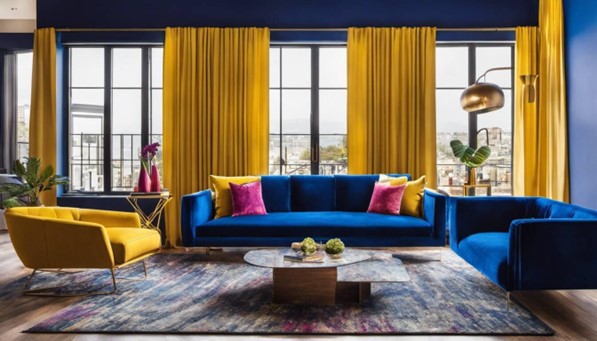Imagine walking into a room and immediately feeling a wave of tranquility wash over you, or conversely, an energetic spark ignite within you. What if I told you, this has less to do with the objects in the room and more about the color on the walls? Dazzling reds, calming blues, or vibrant yellows; no element of interior design influences mood and aesthetics quite like color. Grab a cup of coffee and join us as we explore the fascinating world of color psychology in interior design, unraveling the powerful subtleties of shade selection that can transform any space instantly.
Color plays a vital role in interior design as it can influence the mood, ambiance, and perception of a space. Warm colors like red and orange can create an energizing and inviting atmosphere, while cool colors like blue and green can promote calmness and relaxation. Additionally, different color combinations and patterns can enhance or diminish the perceived size and shape of a room. Understanding the psychology of color is essential for creating harmonious and visually appealing interiors.

The Impact of Color in Interior Design
Color is arguably one of the most powerful tools at an interior designer’s disposal, as it can significantly impact the overall atmosphere and aesthetics of a space. When used strategically, colors have the ability to evoke emotions, create focal points, and even influence our perception of size and shape within a room. Understanding the impact of color in interior design is key to creating spaces that are not only visually appealing but also promote a particular mood or ambiance.
Colors can be broadly categorized into warm tones and cool tones. Warm colors like reds, oranges, and yellows tend to elicit feelings of energy, warmth, and excitement. They can be excellent choices for spaces where social interaction or creativity is encouraged, such as living rooms or dining areas. On the other hand, cool colors like blues, greens, and purples have a calming effect on people and can make a space feel more serene and relaxing. These hues work well in bedrooms or areas meant for unwinding and relaxation.
Now that we understand the general impact of color in interior design, let’s explore how colors specifically influence our mood.
- What is the impact of color in interior design?
- A study published in the Journal of Environmental Psychology found that blue and green hues in an environment can lead to improved performance on tasks that require generating new ideas.
- According to a survey by Travelodge, people who have a blue bedroom get an average of 7 hours and 52 minutes of sleep per night – the most among any color group.
- Research from the Pantone Color Institute suggests that over 80% of our information intake is visual, with color playing a key role in our perception and emotional response to different spaces.
Relationship Between Color and Mood
Our emotional response to color is deeply ingrained in us as human beings. Different colors have been found to trigger specific psychological reactions that can ultimately affect our mood. For example:
- Blues: Blue hues are often associated with tranquility, stability, and trustworthiness. Lighter shades of blue can promote a sense of calmness and serenity, making them ideal for bedrooms or areas intended for reflection.
- Reds: Red is a bold color that can evoke various emotions depending on its intensity. Darker shades of red may exude power and passion, while lighter shades can stimulate excitement or energy. However, too much red can also be overwhelming or provoke feelings of anger or agitation.
- Yellows: Yellow is often associated with happiness, optimism, and warmth. It can create a sense of cheerfulness and is commonly used in sunlit spaces like kitchens or playrooms.
- Greens: Green is often connected with nature, growth, and renewal. This color has a calming effect and is frequently used in areas where relaxation or concentration is desired, such as home offices or reading nooks.
It’s important to note that individual experiences and cultural backgrounds can also influence our emotional response to color. Therefore, it’s crucial to consider personal preferences and the purpose of the space when selecting colors for interior design.
For instance, if you want to create a cozy reading corner in your living room, consider using warm and inviting colors like deep browns or rich maroons. These colors can help you feel relaxed and immersed in the world of literature.

